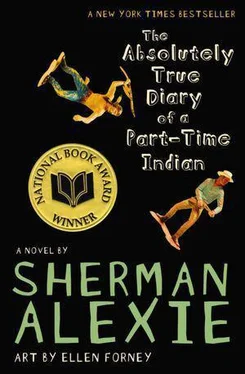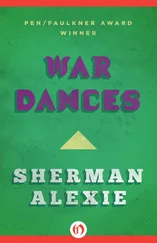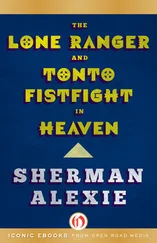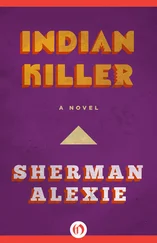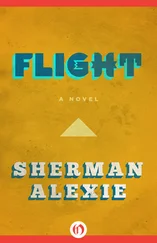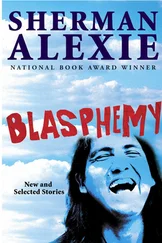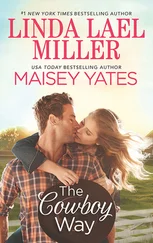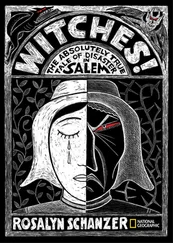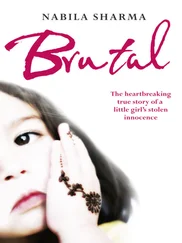Then when I got to the end of the manuscript, where Arnold and Rowdy play basketball, and as it was getting dark outside, I felt a tightening in my chest and I realized I was about to bawl. It felt like I was playing a bittersweet basketball game with Rowdy. I had a split second to decide whether or not I would cry in the cafe, and I put my head in my hands, sobbed once, and thought about something else. I had read that section so many times, but until then I hadn't been so deep in Arnolds mind.
What was your biggest concern/objective when creating the art for the book?
My absolute biggest concern was to make Arnold's comics look authentic. I was afraid my work would look too polished and professional, or maybe too goofy, but I also didn't want to dumb it down or stiffen it up. I briefly tried to draw like some of my teenage boy students, but that didn't work at all—you could tell I was trying too hard and it was obvious that it wasn't my style. So I talked about it with Sherman, and he thought it'd be fine if I just drew like me.
What's the most difficult part of the process: sketching the artwork or inking?
My process for this book was different from usual. In most of my work, doing the thumbnails is hard (writing and drawing my brainstorming ideas), sketching is easier (penciling and polishing up what I've laid out in the thumbnails), and inking is easiest (I use a brush and india ink).
For this book, the thumbnails were hard because I had to stay in Arnold's mindset, and I was interpreting someone else's work. Sketching was weird because I had to remember to keep the looseness of the thumbnails, and inking was REALLY HARD! The drawings needed to look like Arnold just sat down and drew them, boom. This may sound counterintuitive, but it takes way more concentration and confidence to make fast lines and swoops than my usual slow and
deliberate inking. Also, Arnold wouldn't use a brush in his sketchbook, so I used a felt-tip pen.
So not only was I using an unfamiliar tool, I was trying to make labored drawings look
spontaneous. I got cramps in my hand a lot.
Why did you use so many different drawing styles?
I used three drawing styles. In my own sketchbooks (and scraps of paper and backs of envelopes), I use different styles for different purposes, and I felt that Arnold would, too. Arnold's artwork needed to span different situations and moods, so his drawing style needed change as well.
First, the more scribbled-looking illustrations and comics suggest that Arnold is jotting down his thoughts in an immediate way, like he'd just had an idea and quickly wrote it down. Most of the artwork is like that.
Second, the slightly more realistic cartoons, like the annotated portraits of his family, suggest that he's giving more thought to what he's doing. Certain ideas would have been rumbling around his head and were well-developed by the time he put them on the page.
Third, the penciled portraits suggest two different types of intimate situations. Detailed, more realistic drawings can take a while, and in that way describe a span of time, so we know that Arnold was concentrating and focusing on his artwork and on whatever subject he was drawing.
time with those people, but for some reason—logistically, or emotionally—couldn't do it in person.
The pencil sketches of his friends suggest that he spent a lot of time with his friends looking at them intently and that they were comfortable with that intimacy. For example, I imagined that Arnold sketched his friend Gordy as he studied in the library, concentrating on the weird way Gordy rested his face on his hand with his intent facial expression and the curve of his shoulders.
Arnold was using his sketchbook to love Gordy, in a way.
Other pencil sketches, like the portrait of Eugene on a motorcycle, suggest that he drew them from a photograph. He wanted to spend time with those people, but for some reason—
logistically, or emotionally—couldn't do it in person.
One other detailed style was for the Penelope bird. When Arnold drew that, he was thinking about how he loved Penelope and how they both wanted to fly away. I thought he might sit with that feeling for a while and I imagined he was in the school library copying a bird out of a textbook. Arnold would sit and draw very meditatively in ink—all the feathers, using shading, crosshatching, and even little dots.
Can you explain how the portrait of Rowdy evolved from being a straight-on elegant sketch to one that was defaced?
I actually did a similar thing in one of my own sketchbooks several years ago. I was in a terrible mood, and was drawing a self-portrait to get it out of my system. I was about half-done and I hated it, so I scribbled a big "X" over my whole face. When I looked at it later, I realized that it reflected my mood much better than if I'd actually finished the drawing.
The drawing of Rowdy is meant to be a vignette, describing the particular intimacy in Arnold and Rowdy's friendship. Rowdy was much more defensive than Arnold about bow close they
were, and was constantly pulling Arnold to him and pushing him away, often al the same time. I pictured the scene like this:
Rowdy was lying on the floor in an unself-conscious way. Arnold was sneakily drawing a
portrait of him, but when Arnold was only half-done. Rowdy looked up and snapped, "What're you drawing?!" The scene changed from intimacy to defensiveness with Arnold stopping and scribbling the cartoon face over Rowdy's face, with the word balloon of Rowdy's verbal slap.
I hadn't planned all that out when I started doing the sketch, but when I was half-done I realized that Arnold wouldn't have been able to pin Rowdy down for very long. I took a piece of tracing paper and scribbled an angry cartoon face over Rowdy's face, and that looked just right to me.
What do you feel is the biggest contribution your artwork brings to the book?
Arnold depends on his cartoons to express himself, be understood, to escape, and to survive. He says they are his "tiny little lifeboats." The reader needs to see what he's talking about and what he means by that.
Drawing in your own sketchbook is like writing in your own diary, which is very personal. And creative people can do some intense work when they're using their medium to express
themselves, just for themselves. Arnold doesn't even understand all these things he's getting down on paper, because so much comes through subconsciously.
I also did all of Arnold's handwriting. Handwritten text in general can have a lot of emotional power and charm. Like a handwritten letter, it's much more personal and individual than typeset text. There's also a sense of immediacy because you can't cut-and-paste or delete paragraphs; you only write and that's that.
The "crinkled scraps of paper" design was to make sure the graphics were set apart somehow so they didn't just look like illustrations drawn straight from the text. The look makes clear that Arnold doesn't have a nice, shiny sketchbook, but instead collects his artwork on scraps of paper.
What did you take away from this project?
I got to stretch my repertoire and deal with material that I wouldn't have come up with on my own. I really wanted to do justice to the story. Junior, Sherman, and to the complex issues Sherman evoked so beautifully with his words. The manuscript is so rich and vivid: I couldn't help but think, "What a task!" Doing this work was like running a marathon, eating a big rich feast, and walking into creepy basements with a candle.
My dad got a copy of the book as soon as it came out. He'd read a review that said he'd laugh and cry, which he of course shrugged off as marketing pap. The next day, he called me to say that he'd chuckled out loud and teared up a few times by the end. He was amazed.
Читать дальше
